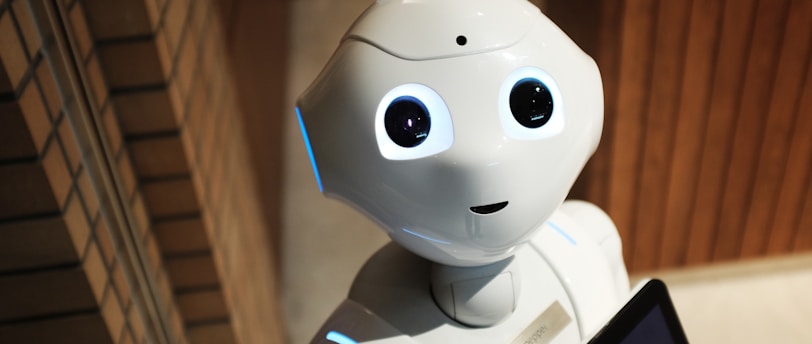AI and The Coming Internet Of Things
The transformative potential (and dangers) of integrating Artificial Intelligence with the Internet of Things
12/30/20232 min read


The Internet of Things (IoT) has been revolutionizing various industries, connecting devices and enabling data exchange like never before. However, the synergy between IoT and Artificial Intelligence (AI) holds exceptional potential to take this technological advancement to new heights. As AI continues to evolve, it is gradually reshaping the landscape of IoT, improving efficiency, enhancing decision-making capabilities, and bringing unprecedented opportunities across multiple domains.
Enhanced Connectivity and Device Interactions
Integrating AI with IoT creates a dynamic ecosystem where devices can communicate and interact intelligently. AI algorithms enable devices to analyze vast volumes of data generated by IoT sensors and make sense of it in real-time. This intelligent analysis helps identify patterns, anomalies, and correlations that may have otherwise gone unnoticed, leading to actionable insights. With AI's ability to process and learn from data, devices within the IoT ecosystem can continuously improve their decision-making algorithms, leading to enhanced automation and optimized operations.
Predictive Analytics and Maintenance
AI's predictive capabilities leverage historical data, enabling IoT devices to anticipate and prevent failures or breakdowns before they occur. This combination revolutionizes maintenance practices, shifting from reactive to proactive strategies. For instance, AI-powered machines in manufacturing processes can predict equipment failures, optimize performance, and schedule maintenance activities accordingly, reducing downtime and maximizing productivity. This predictive power also extends to applications in healthcare, agriculture, transportation, and energy sectors, among others.
Streamlined Data Management and Security
The massive influx of data generated by IoT systems poses significant challenges for storage, retrieval, and analysis. AI-driven technologies like machine learning and natural language processing help organizations overcome these hurdles and uncover relevant insights from the vast amounts of data. AI algorithms can efficiently process and filter data, greatly simplifying the management and extraction of valuable information. Additionally, AI enhances security within the IoT ecosystem by analyzing patterns and behaviors, detecting potential threats or anomalies, and flagging them for immediate attention.
Personalized User Experience
By combining AI and IoT, a deeply personalized user experience can be created. AI-powered algorithms can analyze user behavior, preferences, and historical data collected from IoT devices, enabling tailored recommendations and adjustments. For example, smart homes equipped with AI can learn and adapt to individual users' routines, adjusting lighting, temperature, and entertainment settings accordingly. Similarly, AI can enhance the user experience in healthcare by continuously monitoring vital signs and providing personalized recommendations for improved well-being.
Potential Negatives
1. Privacy and Security Risks: The widespread collection of personal data by IoT devices and the reliance on AI algorithms raises concerns about privacy breaches, unauthorized access, and potential data misuse.
2. Job Displacement: Automation facilitated by AI and IoT systems may lead to job losses and economic disruption as tasks become automated and performed more efficiently by machines.
3. Ethical Dilemmas: AI's decision-making capabilities present ethical challenges, including biases, discrimination, and the need for accountability when algorithms make critical choices in various sectors.
Addressing these concerns through robust cybersecurity measures, privacy regulations, retraining initiatives, and ethical guidelines are essential to ensure the responsible and ethical implementation of AI and IoT technologies.
Conclusion
While the fusion of AI and IoT offers remarkable benefits, it is crucial to address the potential concerns associated with these technologies. Privacy and security risks arise from the collection of personal data, raising concerns about unauthorized access and data misuse. Job displacement due to the automation capabilities of AI and IoT systems poses economic challenges that must be tackled. Additionally, ethical dilemmas emerge, necessitating accountability and measures to prevent algorithmic biases and discrimination. By prioritizing robust cybersecurity, privacy regulations, retraining initiatives, and ethical guidelines, we can maximize the potential of AI and IoT while ensuring responsible and ethical implementation. With careful consideration, we can unlock the full power of this synergy, transforming industries and society for the better.
